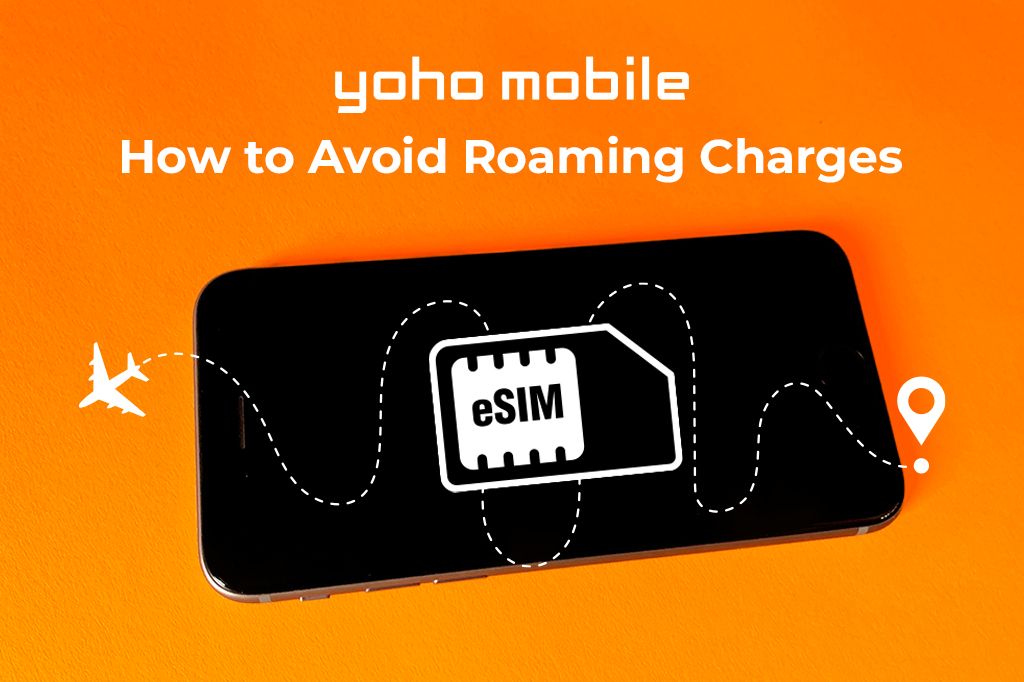You’ve just had the trip of a lifetime. You’re back home, scrolling through photos of ancient ruins and sunny beaches. Then, an email notification pops up from your mobile provider. Your heart sinks as you see the bill: hundreds of dollars more than usual. All because of roaming charges.
What if you didn’t have to stress about that? What if staying connected abroad were simple and affordable? In this guide, we won’t just tell you to “turn off your data.” Instead, we’ll introduce you to smart, modern tools like eSIMs that let you use local data plans without swapping physical SIM cards or racking up huge fees.

What Is Roaming and Why It’s Still a Problem
You’d think by now we’d have figured this out. But roaming charges are still a thing, and they’re still expensive. Why? Behind the scenes, your phone isn’t just making a call or checking Instagram. It’s making deals, well, your carrier is. Every time your phone connects to a foreign network, your provider has to pay that network for the privilege. Then, of course, they charge you even more to cover their costs and make a profit.
Some places, like the European Union, have “Roam Like at Home” policies, have rules that protect you from these fees. But most of the world doesn’t. That means carriers are free to keep charging high prices, and since they’re making money from it, there’s not much pressure for them to stop.
In short, roaming is less about tech limitations and more about business decisions.

There are a few different types of roaming charges to watch out for, each a potential trap for the unprepared traveler:
-
Data Roaming: This is the silent bill killer and the most common culprit behind shocking overages. It applies whenever your phone uses data for anything online: refreshing apps in the background, syncing photos to the cloud, using maps for navigation, or even just receiving emails. A few minutes of scrolling on social media or streaming a short video can cost more than a souvenir.
-
Call Roaming: This charge applies not only when you make calls but also when you receive them. That’s a detail many travelers miss. Answering a quick call from a family member back home could easily cost you several dollars, and a longer conversation can quickly escalate.
-
SMS Roaming: While less frequent in the age of messaging apps, sending traditional text messages can still come with a higher price tag. Unlike your domestic plan, you’re often charged per message sent.
Roaming Horror Stories: Real Experiences That Could’ve Been Avoided
Those stories aren’t rare; they’re just avoidable. If you’re heading abroad, learning how to avoid roaming charges is crucial, as shown by these real-life stories.
Hilary O’Donnell, a Nottingham-based consultant, a business traveler from Nottingham, found that her UK phone couldn’t make calls in New York. Trying to get help, she called her carrier’s support through WhatsApp, but didn’t realize data was costing £7.75 per MB. In less than an hour, her bill soared to £6,648, overdrafting her account. She could have avoided this by using an eSIM with a spending cap, which would provide affordable local data and calls abroad.
Another example is a mother traveling in Shanghai who skipped currency exchange and tried to withdraw cash at an ATM. Her US bank flagged the withdrawal as fraud, froze her cards, and without reliable mobile data to receive verification texts, she was stranded for two days. A regional eSIM with active data would have kept her connected for instant bank verification.
Then there’s a family who racked up a shocking $78,240.61 bill on T-Mobile during a multi-country trip, charged $15 per MB due to no global coverage. Using a family eSIM dashboard could have let them preload data for each phone, set alerts, and avoid surprise charges. These stories prove just how important it is to prepare before traveling.

How to Avoid Roaming Charges
Roaming charges can quickly turn your trip into an expensive headache. Luckily, avoiding them is easier than you think:
-
Turn Off Data Roaming: Before you leave, head into your phone’s settings and switch off data roaming. This stops your phone from accidentally connecting to costly foreign networks. On iPhone: Settings > Cellular > Cellular Data Options > Data Roaming OFF. On Android: Settings > Connections > Mobile Networks > Data Roaming OFF
-
Use Airplane Mode + Wi-Fi: Put your phone in Airplane Mode to cut off all cellular connections. Then, turn Wi-Fi back on to use the hotel or café internet safely. This way, you stay connected without any roaming fees.
-
Use Offline Apps: Many popular apps work offline if you prepare ahead. Download maps on Google Maps, language packs on Google Translate, and your favorite shows or playlists on Netflix or Spotify before your trip. You’ll enjoy all the essentials without using data.
-
Track Your Data Usage: Install a data monitor app to see which apps use the most data. Keeping an eye on usage helps you avoid surprises and manage your data plan smartly.
-
Choose Yoho Mobile eSIMs: With flexible plans tailored for travelers, Yoho Mobile lets you pay only for what you need. Their easy-to-use app makes activation and data monitoring simple, while 24/7 multilingual support responds in under minutes. Best of all, you can try their free eSIM trial now and experience seamless connectivity before committing. Use code discount code YOHO12 for 12% off when you upgrade!

Overlooked Questions About eSIMs
Can I switch back to my physical SIM easily?
Yes! Your phone’s settings allow you to switch between your eSIM and your physical SIM with just a few taps. You can have your eSIM active for data while keeping your primary number active for calls and texts if you wish.
What happens if I run out of data mid-trip?
With an eSIM, you simply open the app and top up your plan. You can add more data in seconds without needing to find a store or buy a new plan.
Does an eSIM drain battery faster?
No, an eSIM consumes about the same amount of power as a physical SIM. Battery drain is caused by things like screen brightness, background apps, and searching for a signal in a low-coverage area, not by the type of SIM you use.
Will it work in remote or rural areas?
An eSIM’s coverage is determined by its local network partners. If a major local provider has service in a rural area, your eSIM that partners with them will work there too. It offers the same or better coverage than you would get by buying a local physical SIM from that same provider.
